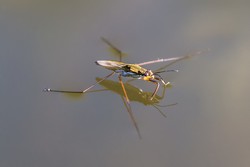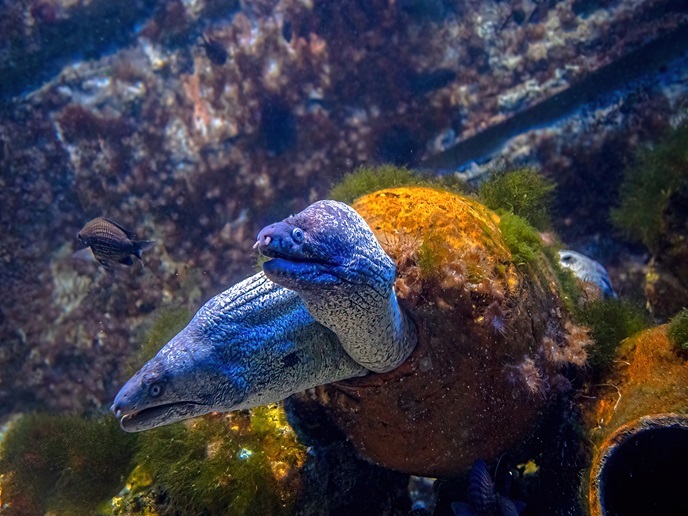Evolution of water walking
Walking on water is a matter of physics, and for small creatures, involves support from the water’s surface tension, among other adaptations. Indeed, many insects rely on the backward force from surface tension for propulsion. One major structural adaptation for walking on water is the evolution of hydrophobic bristles, constructed and positioned so air is trapped where the leg meets the water. Skating the water surface means an insect can occupy massive niches where they can easily feed on readily available zooplankton and other insects. An EU project has used state of the art genomics to unveil genes associated with a strikingly sophisticated set of water walking tackle that enable survival in a very tricky niche – running water surfaces. WATER WALKING researchers investigated the evolution of a highly elaborate swimming fan on the tarsus of the mid-legs. Acting as a propeller on the tops of their second legs, the adaptive feature is present in Rhagovelia spp., a genus of water-walking insects. WATER WALKING researchers used transcriptomics combined with gene expression and function screens to identify genes for development of the super swimming fan. RNA interference (RNAi) inhibited gene expression for the screening by neutralising targeted messenger RNA molecules. Results showed that a gene duplication specific to Rhagovelia is required for swimming fan development. The knock-down of these duplicates – geisha and mother of geisha – had a reduced or totally absent fan, resulting in decreased performance of these insects in strong currents. The WATER WALKING project has successfully integrated evolutionary developmental biology with evolutionary ecology using genomics tools to bridge the gap. A remarkable phenomenon, the mere duplication of a gene has enabled invasion and occupation of an unlikely habitat – the surface of running water.







